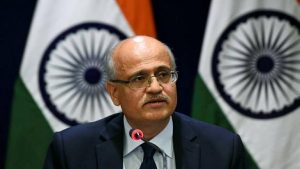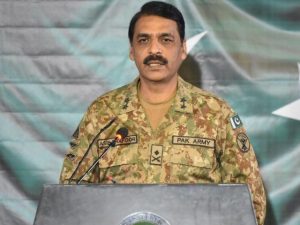Prof Ujjwal K. Chowdhury

Indian air force has struck inside Pakistan and as expected there is a plethora of chest-thumping by politicos on ground and facts of the matter are getting lost.
What has actually happened?
In the early hours of Tuesday, February 26, 12 Mirage 2000 fighter jets from the Indian Air Force (IAF) crossed into Pakistan and bombed a target in Balakot, a sleepy town nestled in the hills of eastern Khyber Pakhtunkhwa province.

Indian foreign secretary Vijay Gokhale in a written statement with no discussion further, noted that it was “intelligence-based pre-emptive strike against non-military targets” . He said that the Indian target was Jaish-e-Muhammad training camp at “Balakot”. He said that the strike was in the face of “credible intelligence” that the group was preparing more fidayeen for terrorist strikes in India. He did not refer to the Indian Air Force or use the term air strike, describing what had happened merely as “an intelligence led operation” against a key Jaish facility. He did not refer to the location struck as being in “Pakistan” or PoK though he did say “information regarding the location of training camps in Pakistan and PoJK has been provided to Pakistan from time to time.”

On the other side, Pakistani military spokesperson, Maj General Asif Ghafoor, broke the story, noted the following: IAF violated LOC and Pak F16 aircrafts scrambled and IAF planes retreated leaving ‘payload’ (bombs) near Balakot in an empty space. Finally, after posting pictures of damage by ordnance in an undefined wooded area, Maj Gen Ghafoor tweeted that the intrusion by the IAF “within AJK was 3-4 miles”. AJK, or Azad Jammu Kashmir, is the name Pakistan gives to Pakistan-occupied Kashmir.
So, there rise the questions of exact place of attack (there are two Balakots, one near LOC and one within Pak territory), exact damage done (terrorists killed versus bombs wasted in a vacant space), and the final impact on ground (towards which Pakistan now plans to take global media to ground zero of attacks). In fact, the Indian foreign secretary did not specify any numbers of casualties or extent of damage. It is highly unlikely that Jaish terror group kept a large number of their cadre (some Indian TV channels claiming that to be 300-400) at one place after Pulwama massacre.

There is a Balakot in the Pakistani province of Khyber-Pakhtunkhwa, west of PoK, and an attack there would mean IAF planes managed to fly a considerable distance – the town is around 70 km from the LoC – and return safely to base. There is, however, also a Balakot just across the Line of Control and Maj Gen Ghafoor’s last tweet implied that this was the place where the ordnance was dropped. Off the record, Indian officials are confirming to certain media that the Balakot hit was in Khyber-Pakhtunkhwa after all. That location is also consistent with the use of the phrase “Muzaffarabad sector” by the Pakistani military spokesperson.
Next, it is clear that Pakistan is under psychological pressures and the Pak PM Imran Khan has told that all international fora will be approached, and the nation and army should be ready for war and casualties. Also, China counselled caution and de-escalation of tension, not saying a word to chastise India on the strike. And US and Saudi are also expected to tread the middle path. So, Pakistan is not gaining anywhere.
Pakistan and the global community will now have to keep the redefined red lines in mind. There can be an Indian military response to terror strikes coming from Pakistan. India has dropped three self-imposed limitations of the past: one, keeping conflicts of Kashmir within and not expanding to the “mainland” (Pakistan outside POK). Two, within Kashmir, respecting the sanctity of the LoC/international border. And three, the proactive use of air power. In spite of Pakistan being a nuclear power, India has decided to put forth an aggressive stance. And that is surely a pressure on Pakistani military strategists. The logic of Mutually Assured Destruction (MAD) between two nuclear powers has apparently taken a retreat for the moment.
Will it deter Pakistan backed terrorist modules from continuing with their nefarious activities in Kashmir? Not sure of this. It will not conclusively end Pakistan’s strategy of using low-cost proxies against India. Depending on whether there is an escalation or not, things may stay calm for some time. But compulsive bad habits return. They did soon enough after the defeat in Kargil with the Parliament attack in December 2001. After the panic of Op Parakram in Mumbai, 2008, and with Pathankot and Pulwama. Respite for India, if at all, will be short-lived. There is no immediate scope for complacence.

How will the world community look at India’s transgression of border? International law gives countries the right of self-defence but there is less clarity about pre-emptive self-defence. Countries like the United States and Israel have invoked this right. This is the first time India has formally spoken of it. The official statement after the September 2016 surgical strikes also spoke of “very credible and specific information which we received yesterday that some terrorist teams had positioned themselves at launch pads along the Line of Control with an aim to carry out infiltration and terrorist strikes in Jammu & Kashmir and in various other metros in our country”. However, that action took place “along the LoC”, in Pakistan-occupied Kashmir, which is legally Indian territory. The implications of pre-emptive self-defence were not the same as they may be now, as Balakot is inside Pakistan proper. India’s statement and the reference to the action as “non-military” makes it clear the Indian side has no intention of escalating matters to war. Much now depends on how Pakistan reacts. Interesting to note that the Indian Foreign minister, Sushma Swaraj, has noted that India has intended to hit anti India terror bases and not Pakistani people or the State.
Will the current impasse escalate to a full-scale war between the two nations? The costs are high, with American scholars showing that at least 21 million people will perish, many more maimed, and nearly half of the world’s ozone layer destroyed if there is a nuclear war between India and Pakistan even if they use half of their equal number of nuclear warheads (both are between 120 and 130). So, this seems unlikely, and only a foolhardy leader and his army can think of this. Both nations stand to lose heavily and Pakistan may almost be annihilated if various studies are to be believed.
Finally, it seems the entire action is still clouded in mystery with regards to its actual intent and impact, though there is no denying that the action has happened. We need to watch how this plays out in our domestic, electoral politics. There will be risks in post-Uri type chest-thumping. Because there is no knowing if there will be a retaliation, and if so how and when. The strategically smart thing would be to stay calm and keep it non-partisan, at least for the next several days. It seems unlikely though, if you saw PM Narendra Modi speak at his campaign meeting in Churu in Rajasthan same day, with the pictures of all the CRPF dead from Pulwama forming the backdrop. It is morally wrong to claim political benefits of deaths or valour of the armed forces. And may politically prove to be counter-productive.
Going ahead, Pakistan withdrawing from its suicidal overt and covert succour to terrorism in Kashmir, and India actively winning over the hearts and hands of Kashmiris while combating terrorism firmly, are the only ways to secure South Asia, if these do not sound too idealistic.
The author is a columnist and media academic, and the views expressed are his personal.















